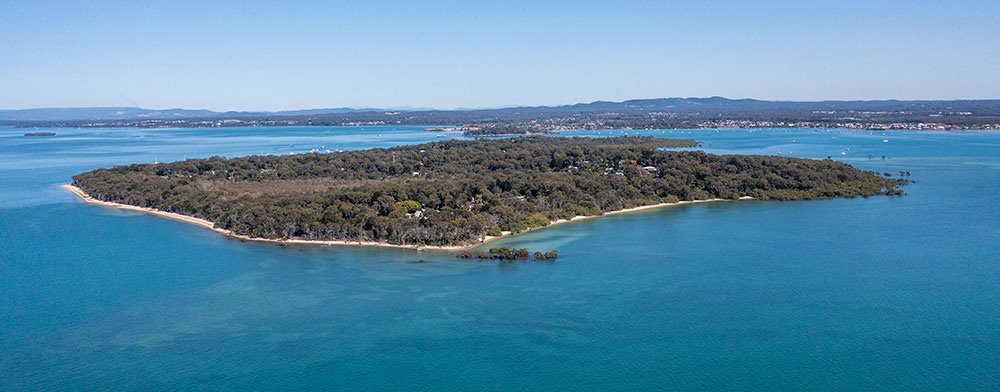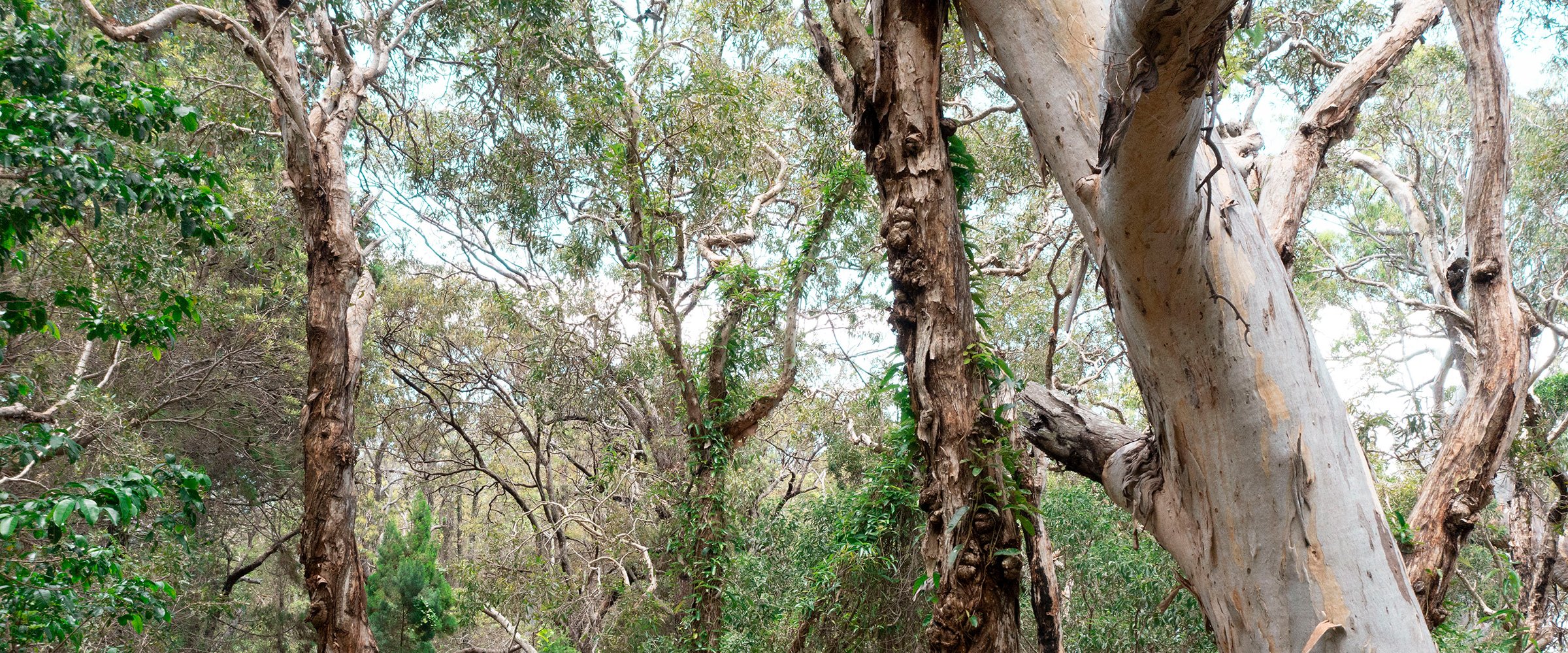
Trees on Coochiemudlo Island
This photographic collection of large native trees on Coochiemudlo identifies the species that dominate the canopy of the island’s Emerald Fringe.
Forest red gum — on the eastern end of Morwong Beach. Typically grows to 20–50 metres. Click photo for tree info from Wikipedia. Photo by Keith Slack.
Northern grey ironbark — this one on the foreshore of Norfolk Beach, near Melaleuca Wetlands entrance. Typically grows to 20–45 metres. Click photo for tree info from Wikipedia. Photo by Keith Slack.
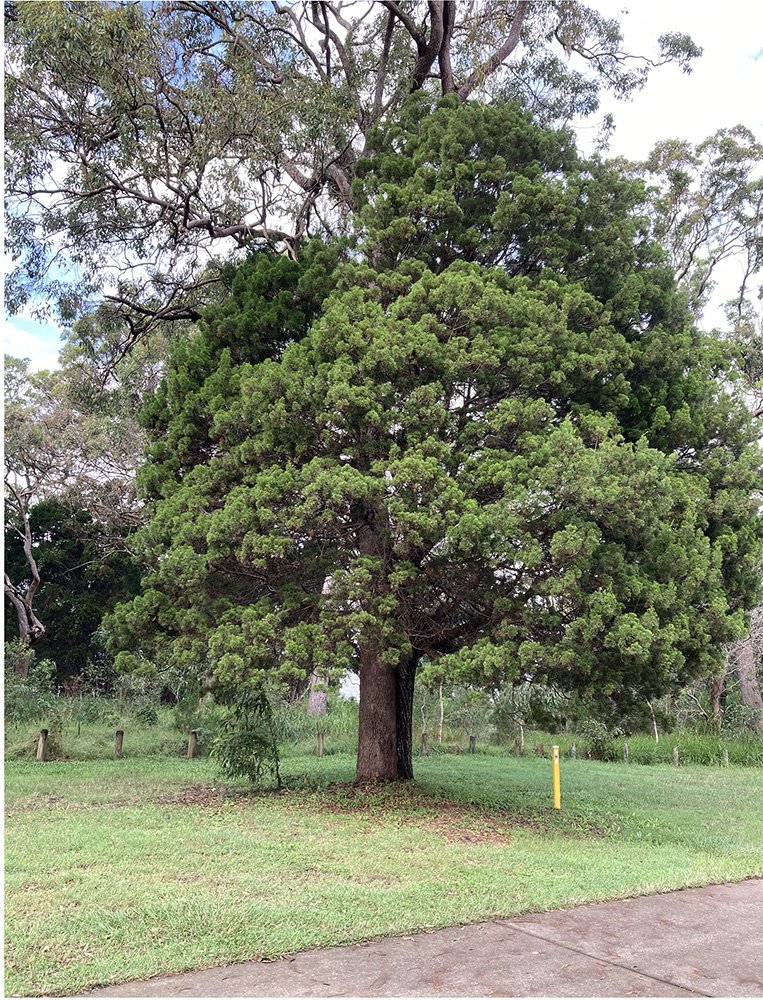
Bribie Island pine (Callitris columellaris) — a coniferous native also known as coastal cypress pine. Typically grows 20 – 30 metres tall. Photo by Keith Slack.
Smooth-barked apple — on the northern end of Victoria Parade West, at the start of the walking track. Also known as the Sydney red gum. First nations people from Sydney knew the tree as kajimbourra. Typically grows to a height of 30 metres. Click photo for tree info from Wikipedia. Photo by Keith Slack.
Melaleuca quinquenervia — this photo was taken in the Melaleuca Wetlands. They grow as a spreading tree up to 20 m (70 ft) tall, the trunk covered by a white, beige and grey thick papery bark. The grey-green leaves are egg-shaped, and cream or white bottlebrush-like flowers appear from late spring to autumn.taller melaleucas are commonly called paperbarks. Click for more on Wikipedia.
Bloodwood (Corymbia gummifera) — this one on the Morwong Beach foreshore, on Victoria Parade North. Typically grows to a height of 20–35 metres. Click photo for tree info from Wikipedia. Photo by Keith Slack.
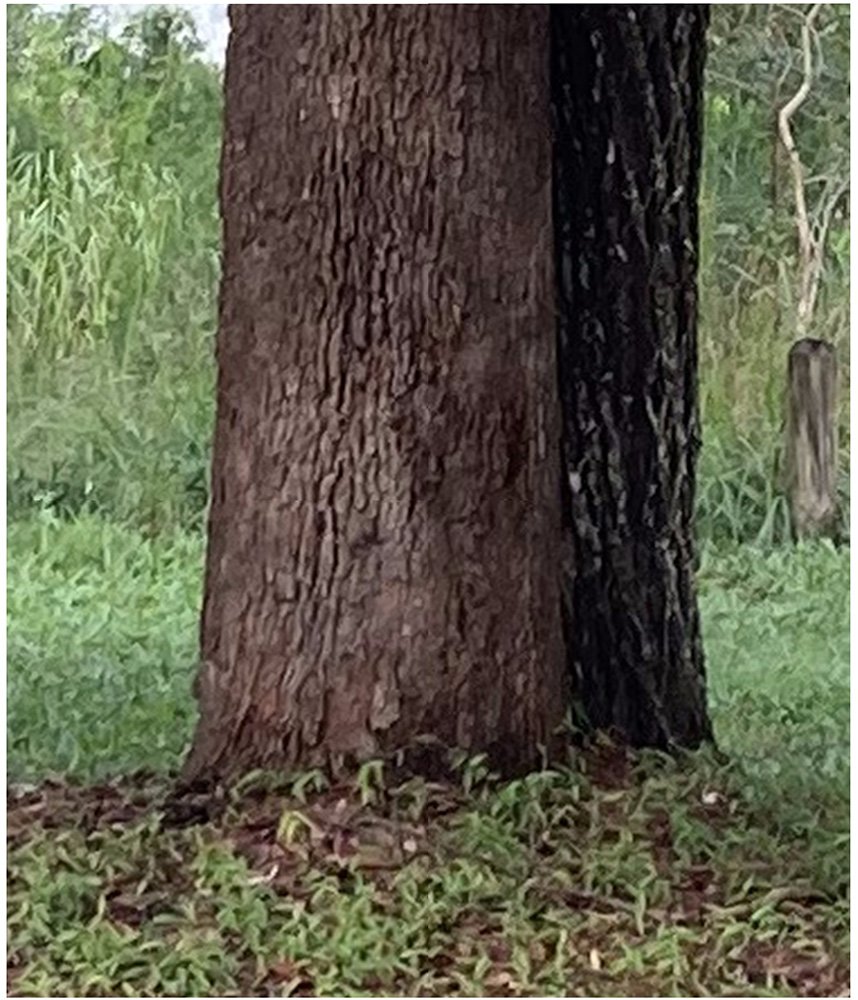
The rough bark of two of these listed trees — Bloodwood in the front, and Bribie Island Pine nestled behind. Photo by Keith Slack.
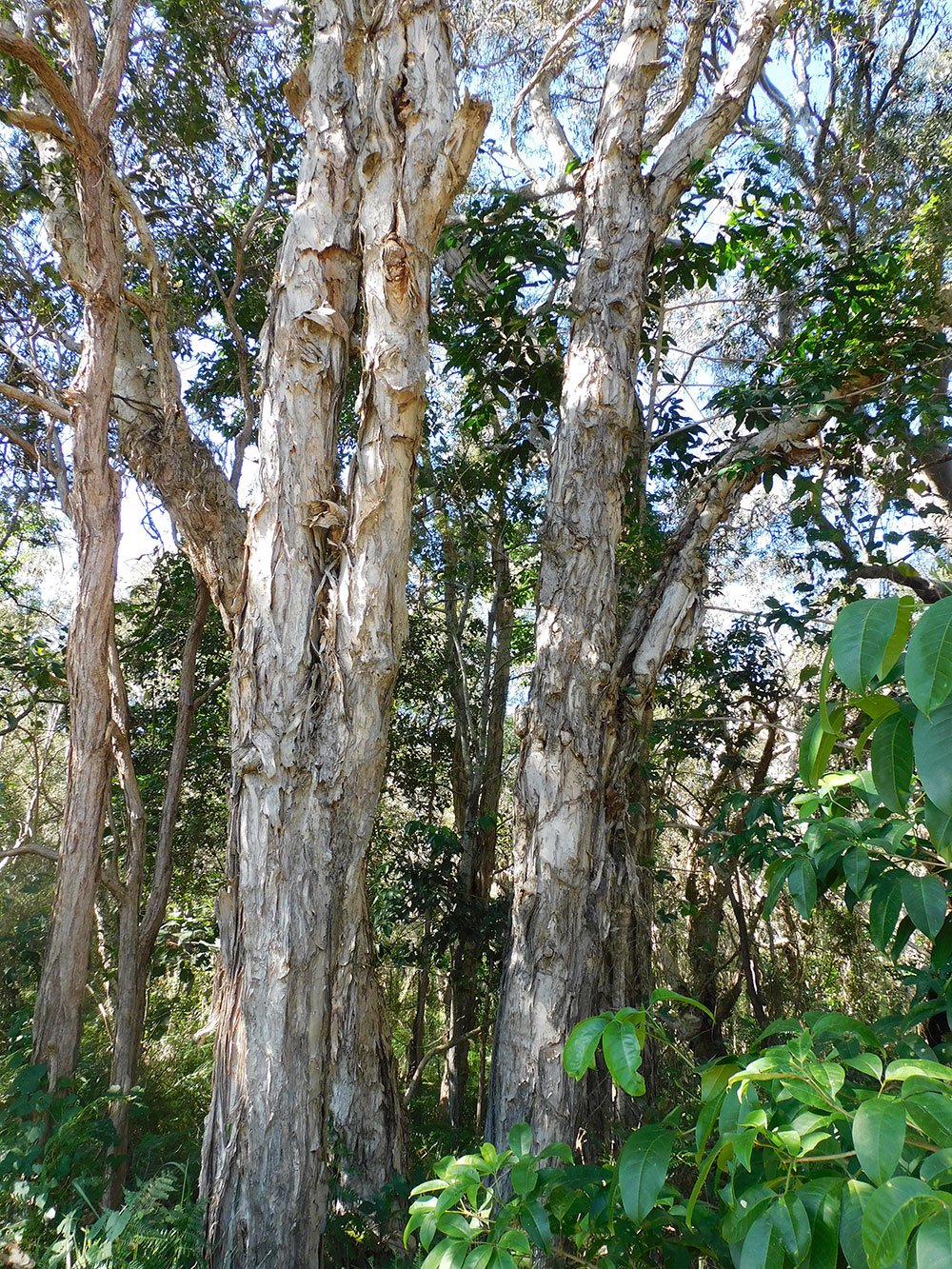
Coastal Paperbark (Melaleuca quinquenervia) Grows in predominantly wet areas or swamps to 25m with paper bark and white flowers in spikes. Photo by Lee Steindl.
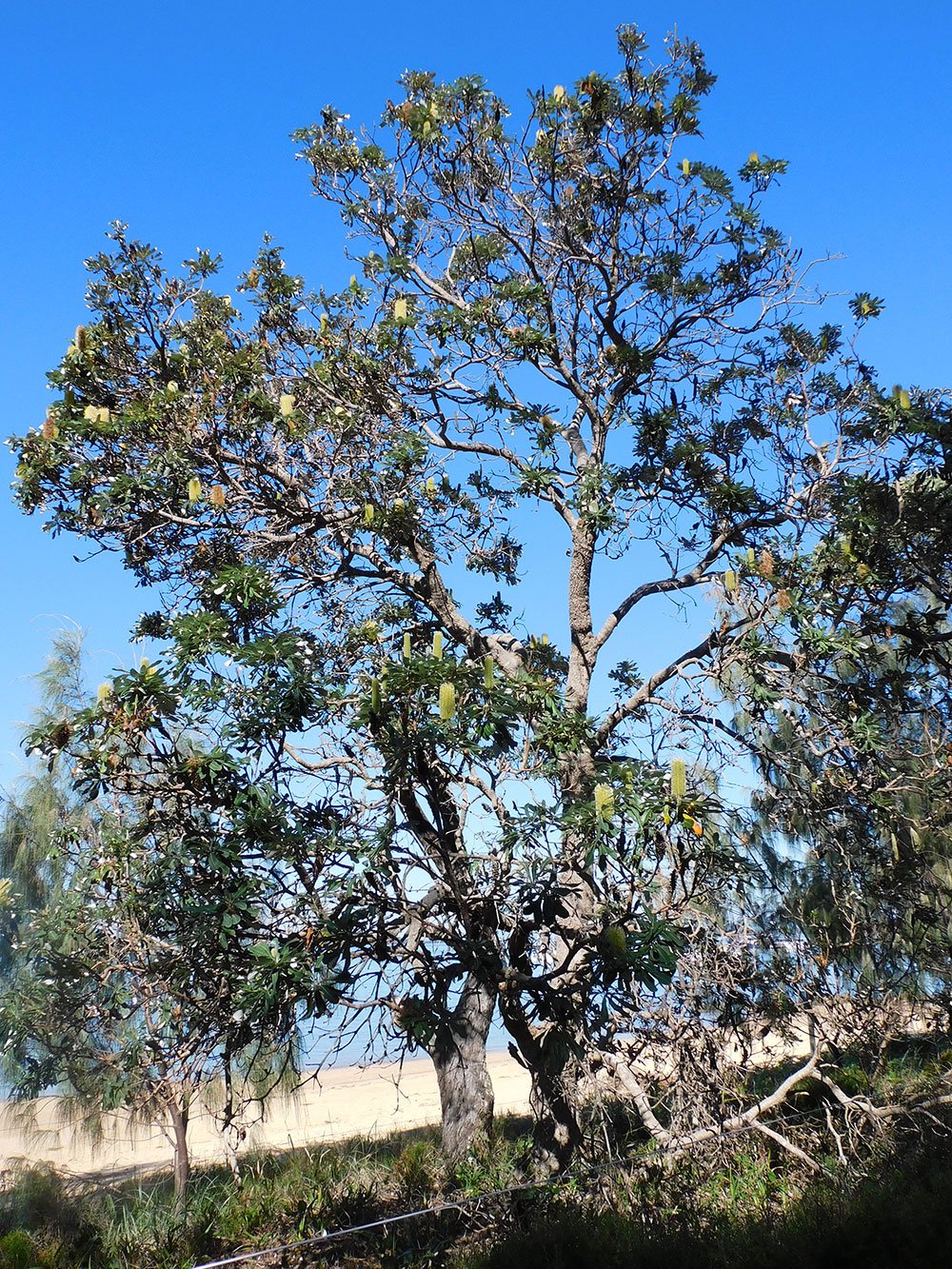
Coastal Banksia (Banksia integrifolia) Commonly found in sandy coastal areas such as Norfolk Beach and grows to 20 m. Flowers are upright yellow brushes. Photo by Lee Steindl.
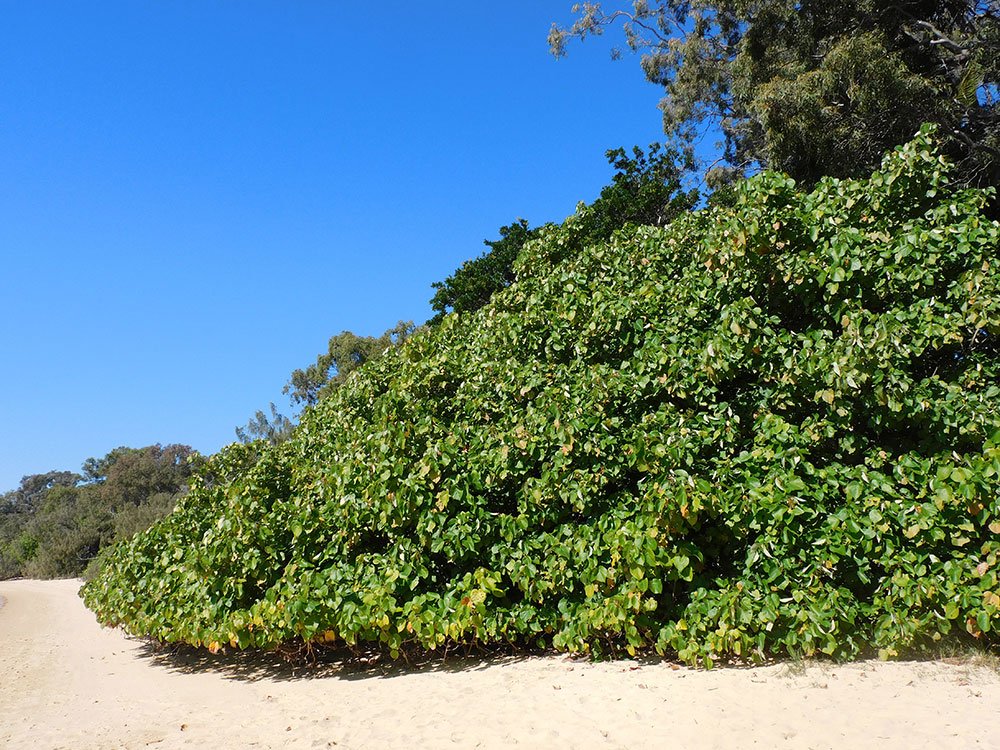
Beach Cotton (Hibiscus tiliaceus) Large spreading tree to 9m found on sheltered beachfronts such as Morwong Beach and along tidal streams and estuaries. Large yellow flowers to 10cm.

Beach Cotton (Hibiscus tiliaceus) Large spreading tree to 9m found on sheltered beachfronts such as Morwong Beach and along tidal streams and estuaries. Large yellow flowers to 10cm. Photo by Lee Steindl.
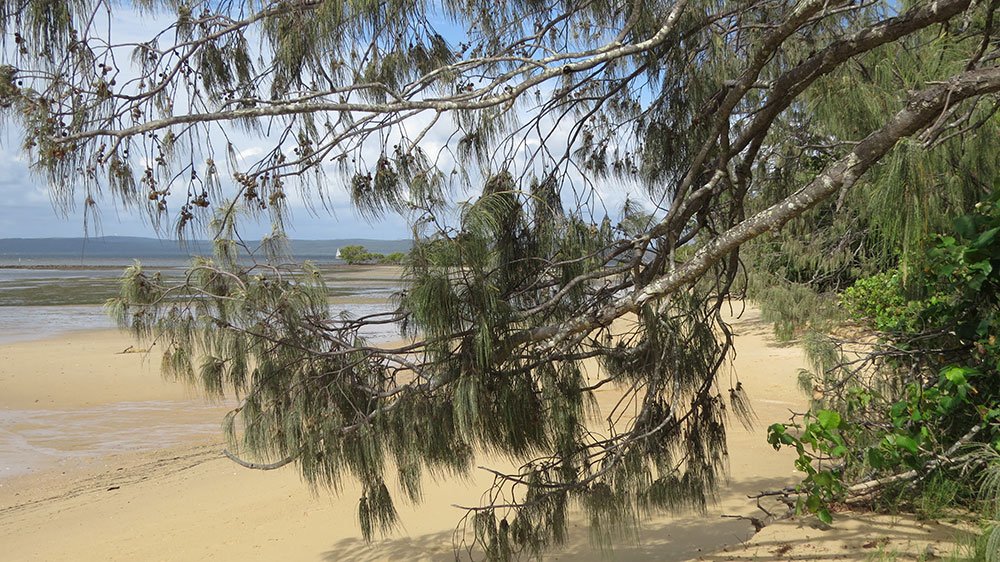
Coastal She-Oak or Horsetail Oak (Casuarina equisetifolia) Grows to 10 and found on sandy foredunes. Has rough grey bark and seeds in woody cones. Photo by Lee Steindl
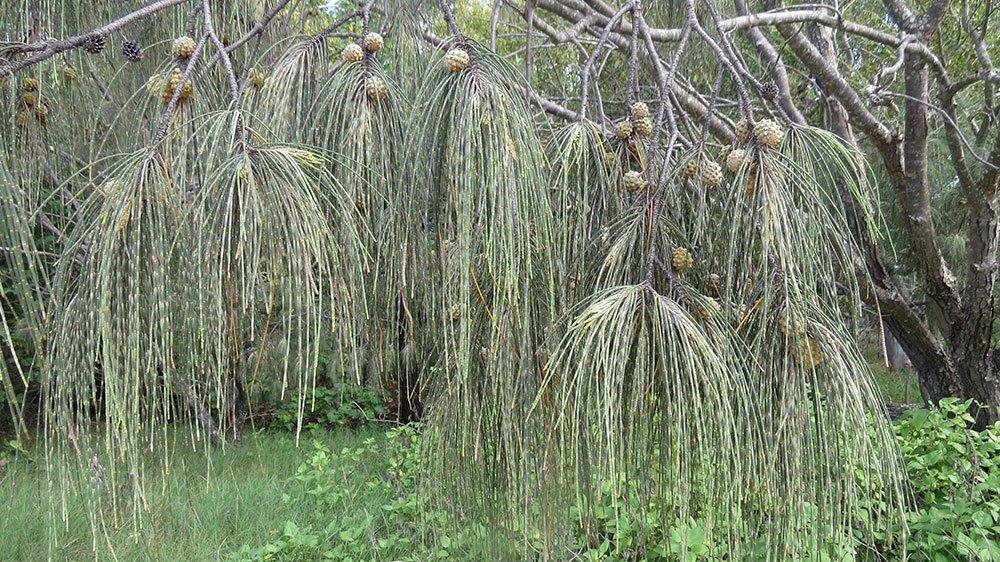
Closeup of the woody cones of thee Coastal She-Oak or Horsetail Oak (Casuarina equisetifolia). Photo by Lee Steindl.
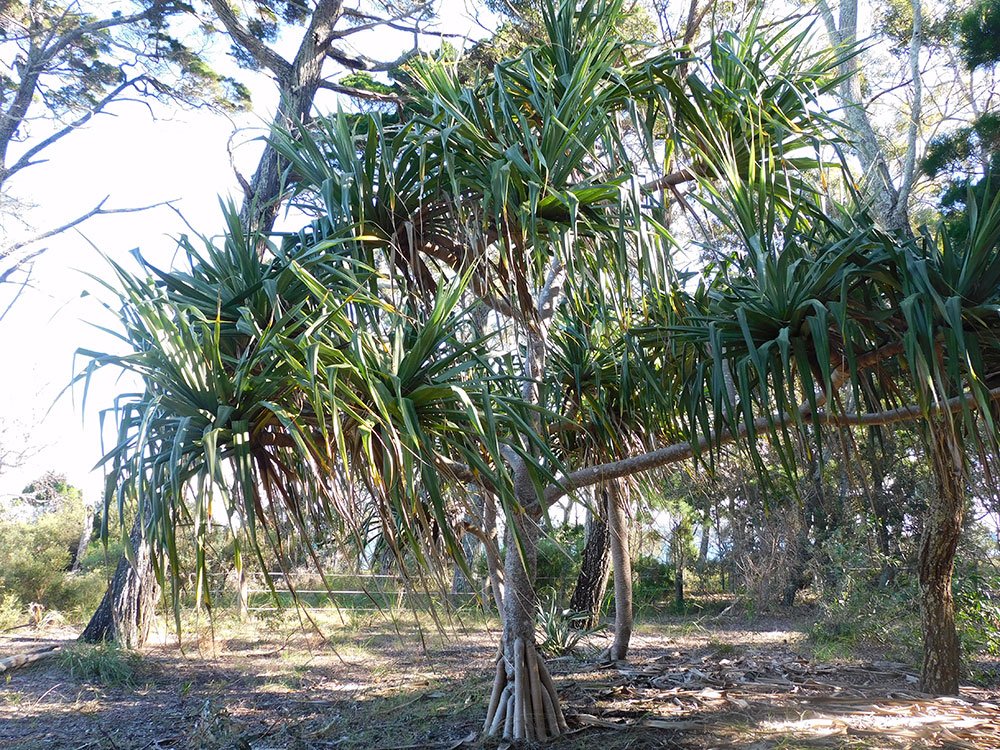
Pandanus or Screw Pine (Pandanus tectorius) Grows to 12 metres on beach fronts or headlands and has thick prop roots and large pineapple-like fruit. On Flinders Beach, SE of the island. Photo by Lee Steindl.

Pandanus or Screw Pine (Pandanus tectorius). Grows to 12 metres on beach fronts or headlands and has thick prop roots and large pineapple-like fruit. Photo by Lee Steindl.

Stands of Bribie Island Pine and eucalypts, on the south-west of the island. Photo by Lee Steindl.






